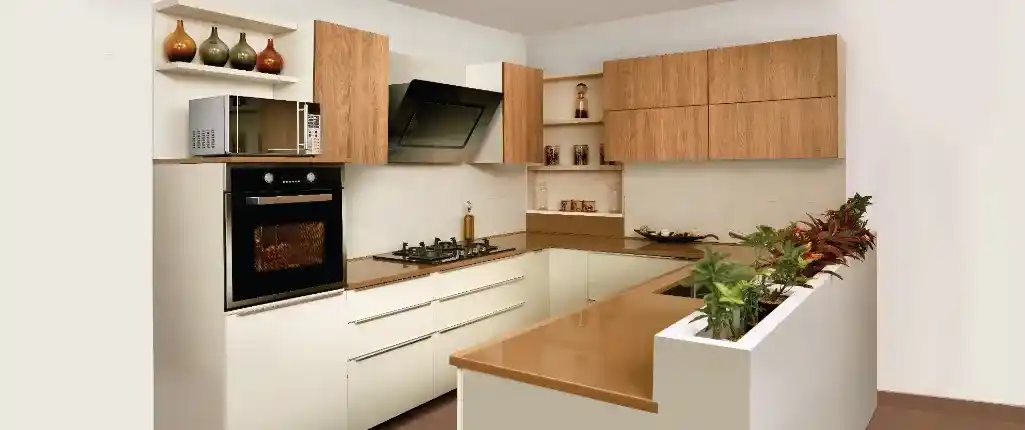Designing a small modular kitchen requires careful consideration to optimize space utilization and create a functional and aesthetically pleasing environment. Here are some practical and helpful suggestions for creating kitchen designs for small spaces:
1. Efficient Layout: Start by planning an efficient layout that allows for smooth movement and easy access to essential kitchen areas. The work triangle concept is a popular approach involving placing the sink, stove, and refrigerator in a triangular formation. This arrangement minimizes the distance between these critical areas, making cooking tasks more efficient.
2. Utilize Vertical Space: Maximizing vertical space is crucial when working with limited floor space for a small modular kitchen. Install tall cabinets that reach the ceiling to provide ample storage for items not in frequent use. Utilize the upper sections of cabinets for storing items that are accessed less often. Additionally, consider installing open shelves or hooks on the walls to display and store frequently used kitchenware.
3. Opt for Compact Appliances: In a small modular kitchen design, choosing compact appliances can help save valuable counter and storage space. Look for compact refrigerators, dishwashers, and cooking appliances specifically designed for small kitchens. These appliances can fit seamlessly into the overall design without compromising functionality.
4. Smart Storage Solutions: Make the most of your available storage by incorporating intelligent solutions. Consider installing pull-out drawers and shelves in cabinets to improve accessibility and maximize storage capacity. Use organizers and dividers to keep items well-organized and prevent clutter. Utilize the inside of cabinet doors for hanging utensils or installing spice racks.
5. Light and Bright Color Scheme: A bright color scheme can make a small kitchen appear more spacious and airier. Opt for light-colored cabinets, countertops, and walls. White, cream, pale gray, or pastel shades are popular choices. These colors reflect light and create an illusion of openness. Consider using a similar color for the backsplash to maintain a cohesive look.
6. Enhance Natural Lighting: Natural light can make a small kitchen more open and inviting. Maximize the amount of natural light entering space. Keep windows free from heavy curtains or obstructions. If privacy is a concern, consider using sheer or light-filtering window treatments. Additionally, consider installing a skylight or adding a mirror opposite a window to reflect and distribute natural light.
7. Task Lighting: Adequate lighting is crucial in a kitchen, especially in kitchen design for small spaces with more pronounced shadows. Install task lighting under cabinets to illuminate work areas, such as countertops and the stove. LED strips or puck lights are famous for providing focused lighting without wasting valuable space.
8. Compact Dining Solutions: If space permits, consider integrating a compact dining area within the kitchen. Look for space-saving solutions like drop-leaf tables, foldable chairs, or built-in benches with storage underneath. It allows you to have a designated dining area without sacrificing valuable space.
9. Streamline Design: In small kitchens, it’s essential to maintain a streamlined and clutter-free design. Minimize the number of decorative elements and keep countertops free from unnecessary items. Use unique and minimalistic cabinet hardware and choose a cohesive design theme to create a visually harmonious space.
10. Consider Open Shelving: Open shelving can be an excellent alternative to traditional upper cabinets in small kitchens. It provides a visually light and open feel while offering storage for frequently used items. However, ensure the open shelves are well-organized and not overcrowded to maintain an aesthetically pleasing look.
Designing a small modular kitchen requires thoughtful planning and creative thinking. At Saviesa, you can explore numerous kitchen designs for small spaces that you can tailor to your preferences and desirable aesthetics. By implementing these suggestions, you can maximize functionality and create an appealing space that feels larger than it is.

